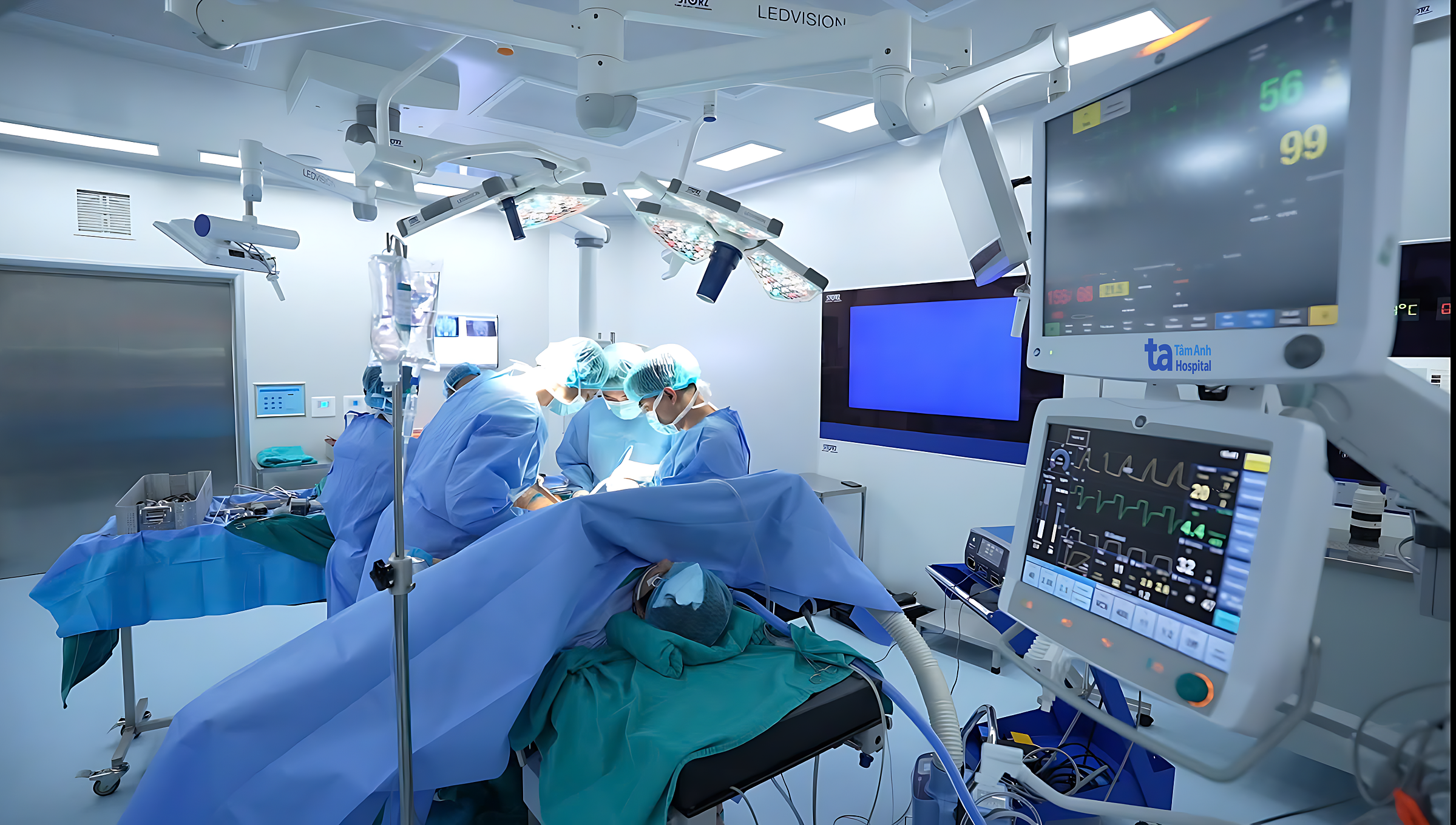Tuan experienced a persistent, worsening pain in his groin and hips for almost a year, limiting his mobility. An MRI at Tam Anh General Hospital in Hanoi revealed bilateral avascular necrosis of the femoral head, stage 3B.
Dr. Nguyen Quang Ton Quyen, Deputy Head of the Department of Orthopedic Trauma, explained that Tuan's cartilage was almost entirely destroyed, his femoral heads were collapsing and deforming, and his joint spaces were significantly narrowed. "Tuan has no underlying diseases, no history of long-term corticosteroid use, and belongs to the group of young people with avascular necrosis of the femoral head of unknown cause," Dr. Quyen explained, adding that his regular alcohol consumption could be a contributing factor to early joint degeneration and damage.
According to Dr. Quyen, at this stage, the condition is beyond conservative treatment, with a high risk of disability without prompt intervention. Tuan was healthy enough to undergo simultaneous bilateral hip replacement. A single surgery avoided two anesthetic sessions, reduced hospital stay, and minimized treatment costs.
Dr. Quyen and his team performed minimally invasive surgery through an anterior approach, minimizing muscle damage, bleeding, and post-operative pain. The soft tissue surrounding the joint was maximally preserved, allowing for early mobilization and reducing the risk of post-operative dislocation. Using the TraumaCad surgical planning software, the surgeons precisely placed two artificial joints, adjusting leg length and range of motion for optimal joint function and stability.
 |
Dr. Quyen and the surgical team operating on Tuan. Photo: Tam Anh General Hospital |
Dr. Quyen and the surgical team operating on Tuan. Photo: Tam Anh General Hospital
The anesthesiologist continuously monitored vital signs, closely controlled blood loss and the patient's response, and maintained stable blood pressure. Tuan experienced no complications and required no blood transfusions during or after surgery.
4 hours post-surgery, Tuan was able to sit up and walk with assistance. His incisions were dry, with minimal pain, eliminating the need for regional anesthesia. Two days later, he was walking steadily with only oral painkillers and no antibiotics. He returned to work after a week, fully recovered.
The incisions were closed with absorbable sutures and covered with biological glue, simplifying home care, eliminating daily dressing changes and suture removal. This closure method also offered high aesthetic value, with smaller, less visible scars compared to traditional stitching or staples.
According to Dr. Quyen, simultaneous bilateral hip replacement is a major procedure, carrying higher risks than single-side replacement. However, with minimally invasive techniques, modern anesthesia and resuscitation procedures, and proactive rehabilitation care, this surgery is feasible for young, healthy patients.
This method can also be applied to healthy elderly individuals with bilateral hip osteoarthritis, severe avascular necrosis, or hip deformities. This not only facilitates faster recovery and shorter treatment times but also ensures safety throughout the procedure. For Tuan, besides significant savings on hospital costs, health insurance coverage further reduced the total treatment cost by about 40%.
Dr. Quyen noted that avascular necrosis often progresses silently, with vague initial symptoms, leading many to overlook it or mistake it for common muscle or ligament pain. By the time joint deformity and limited mobility become apparent, and patients seek medical attention, the disease is often advanced, exceeding the natural joint's capacity for recovery. Dr. Quyen recommends regular exercise, a balanced diet, and limited alcohol consumption to maintain joint health and prevent dangerous complications.
Linh Dang
*The patient's name has been changed
| Readers can submit questions about musculoskeletal diseases here for doctors to answer. |












